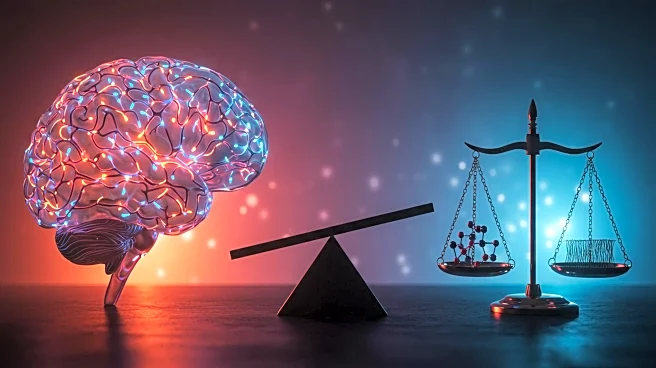What is the story about?
What's Happening?
A recent study has identified a potential link between dopamine imbalance in the brain and trichotillomania, a disorder characterized by compulsive hair-pulling. Using SAPAP3 knockout mice, researchers observed behaviors such as compulsive grooming and heightened aggression, which are similar to human trichotillomania traits. The study found reduced activity in the nucleus accumbens, a brain region associated with reward and habit control, and noted an imbalance in dopamine receptor expression. These findings suggest that targeting dopamine pathways could offer new treatment avenues for trichotillomania.
Why It's Important?
This research is significant as it advances the understanding of trichotillomania's neurobiological underpinnings, which have been largely misunderstood. The disorder affects approximately 1.7% of adults and is classified among obsessive-compulsive and related disorders. Current treatment options are limited, and this study's insights into dopamine signaling and reward circuit dysfunction could lead to more effective therapies. The findings also highlight the potential for sex-specific treatments, as female mice exhibited more severe symptoms, mirroring the disorder's prevalence in women.
What's Next?
Future research may focus on developing targeted treatments that address the dopamine pathway imbalances identified in this study. Additionally, the role of oxytocin, which showed complex effects on grooming and aggression in the study, could be further explored as a potential therapeutic target. Researchers may also investigate the interaction between SAPAP3 and SHANK3 proteins to better understand their role in trichotillomania and related disorders.
Beyond the Headlines
The study raises ethical considerations regarding the use of animal models to understand human psychiatric conditions. It also prompts a reevaluation of current treatment strategies for trichotillomania, emphasizing the need for personalized approaches that consider individual neurobiological differences.
AI Generated Content
Do you find this article useful?

